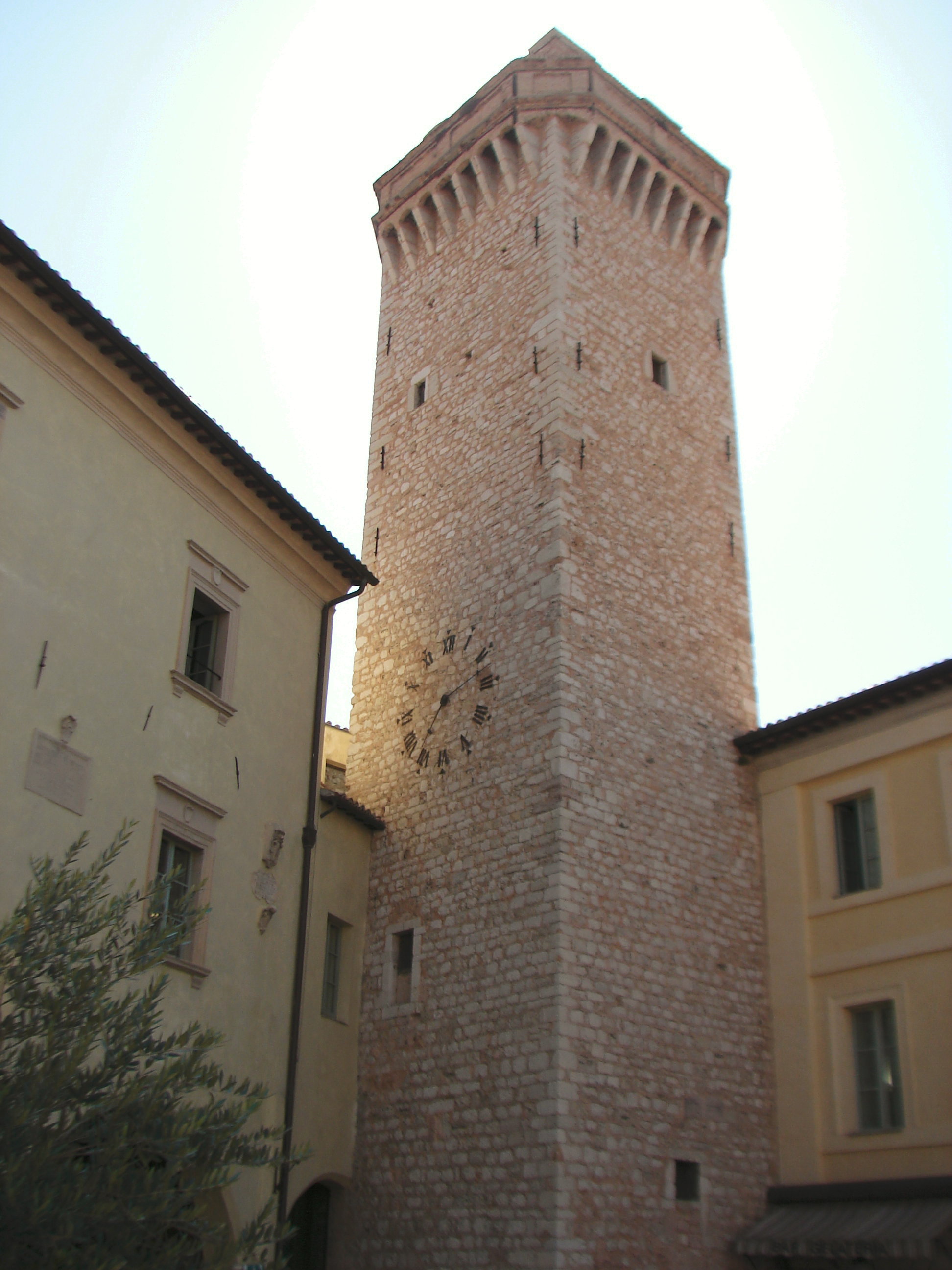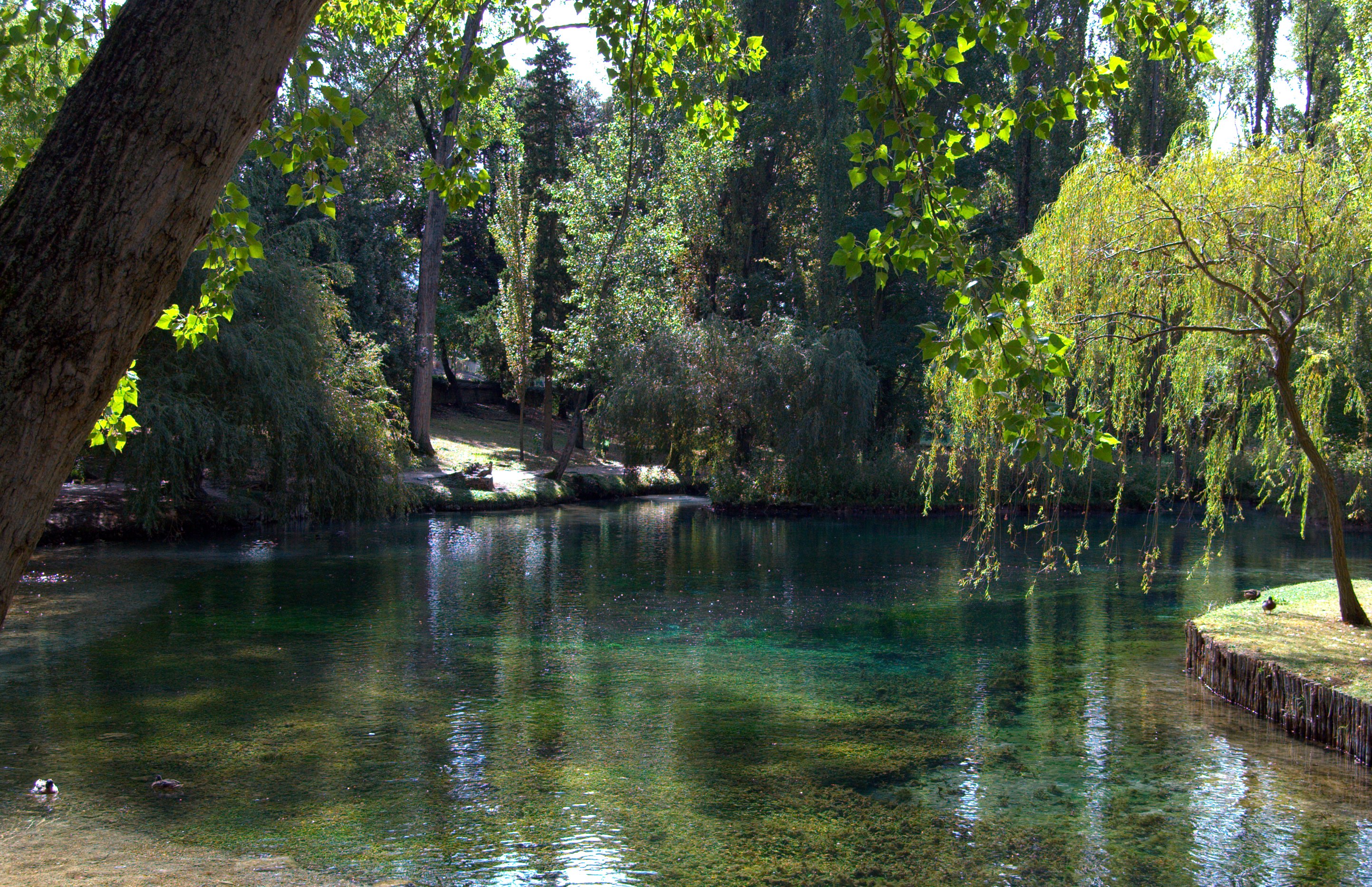|
Cannaiola Di Trevi
Cannaiola is a village of 730 inhabitants in the Italian province of Perugia in east central Umbria in the floodplain of the Clitunno River; altitude 218 m (715 ft) above sea-level. It is a ''frazione'' of the ''comune'' of Trevi, which lies 3.5 km (about 2 mi) to the east. History and main sights The origin of the town's name is, strictly speaking, unknown; but the two most likely possibilities have to do with water: Latin ''canna'', rushes, or Italian ''cannaviola'', canal; an indication of the rôle of water in the town's history. Cannaiola dates to the 13c when a tributary of the Clitunno, a creek called the Tatarena, was shifted west to its present course and the people who had been living closer to the foot of Trevi's hill, but in an unhealthy location, found a place ready-made for them, a few meters higher than their old homes: the old bed of the Tatarena is now the main street of Cannaiola. Cannaiola must have been quite small until the 19th or ... [...More Info...] [...Related Items...] OR: [Wikipedia] [Google] [Baidu] |
Umbria
Umbria ( ; ) is a Regions of Italy, region of central Italy. It includes Lake Trasimeno and Cascata delle Marmore, Marmore Falls, and is crossed by the Tiber. It is the only landlocked region on the Italian Peninsula, Apennine Peninsula. The regional capital is Perugia. The region is characterized by hills, mountains, valleys and historical towns such as the university centre of Perugia, Assisi (a World Heritage Site associated with Francis of Assisi, St. Francis of Assisi), Terni, Norcia, Città di Castello, Gubbio, Spoleto, Orvieto, Todi, Castiglione del Lago, Narni, Amelia, Umbria, Amelia, Spello and other small cities. Geography Umbria is bordered by Tuscany to the west and the north, Marche to the east and Lazio to the south. Partly hilly and mountainous, and partly flat and fertile owing to the valley of the Tiber, its topography includes part of the central Apennine Mountains, Apennines, with the highest point in the region at Monte Vettore on the border of Marche, a ... [...More Info...] [...Related Items...] OR: [Wikipedia] [Google] [Baidu] |
Perugia
Perugia ( , ; ; ) is the capital city of Umbria in central Italy, crossed by the River Tiber. The city is located about north of Rome and southeast of Florence. It covers a high hilltop and part of the valleys around the area. It has 162,467 inhabitants as of 2025. The history of Perugia goes back to the Etruscan period; Perugia was one of the main Etruscan cities. The city is also known as a university town, with the University of Perugia founded in 1308, the University for Foreigners Perugia, University for Foreigners, and some smaller colleges such as the Academy of Fine Arts "Pietro Vannucci" () public athenaeum founded in 1573, the Perugia University Institute of Linguistic Mediation for translators and interpreters, the Music Conservatory of Perugia, founded in 1788, and other institutes. Perugia is also a well-known cultural and artistic centre of Italy. The city hosts multiple annual festivals and events, e.g., former Eurochocolate Festival (October), now in Bastia U ... [...More Info...] [...Related Items...] OR: [Wikipedia] [Google] [Baidu] |
Trevi, Umbria
Trevi (; ) is an ancient town and (municipality) in Umbria, Italy, on the lower flank of overlooking the wide plain of the Clitunno river system. Located in the Province of Perugia, it is 10 km (6 mi) SSE of Foligno and 20 km (12 mi) north of Spoleto. It is one of I Borghi più belli d'Italia ("The most beautiful villages of Italy"). The population of the was c. 8,000 in 2004, with the town proper accounting for about half of that; the rest lives in the (boroughs) of Borgo, Bovara, Cannaiola, Coste, Pigge, Manciano, Matigge, Parrano, Picciche, San Lorenzo and Santa Maria in Valle. The historical subdivisions of Trevi proper are the terzieri of Castello, Matiggia e Piano; they come into play only for the Palio. Most of the town, densely inhabited and of decidedly medieval aspect, lies on sharply sloping terrain, only the very center being more or less flat. It commands one of the best views in Umbria, extending over 50 km (30 mi) in most wes ... [...More Info...] [...Related Items...] OR: [Wikipedia] [Google] [Baidu] |
Italy
Italy, officially the Italian Republic, is a country in Southern Europe, Southern and Western Europe, Western Europe. It consists of Italian Peninsula, a peninsula that extends into the Mediterranean Sea, with the Alps on its northern land border, as well as List of islands of Italy, nearly 800 islands, notably Sicily and Sardinia. Italy shares land borders with France to the west; Switzerland and Austria to the north; Slovenia to the east; and the two enclaves of Vatican City and San Marino. It is the List of European countries by area, tenth-largest country in Europe by area, covering , and the third-most populous member state of the European Union, with nearly 59 million inhabitants. Italy's capital and List of cities in Italy, largest city is Rome; other major cities include Milan, Naples, Turin, Palermo, Bologna, Florence, Genoa, and Venice. The history of Italy goes back to numerous List of ancient peoples of Italy, Italic peoples—notably including the ancient Romans, ... [...More Info...] [...Related Items...] OR: [Wikipedia] [Google] [Baidu] |
Province Of Perugia
The province of Perugia () is the larger of the two provinces in the Umbria region of Italy, comprising two-thirds of both the area and population of the region. Its capital is the city of Perugia. The province covered all of Umbria until 1927, when the province of Terni was carved out of its southern third. The province of Perugia has an area of 6,334 km2 covering two-thirds of Umbria, and a total population of about 660,000. There are 59 ''comuni'' (: ''comune'') in the province. The province has numerous tourist attractions, especially artistic and historical ones, and is home to the Lake Trasimeno, the largest lake of Central Italy. It is historically the ancestral origin of the Umbri, while later it was a Roman province and then part of the Papal States until the late 19th century. History and topology The Etruscans likely founded Perugia in the 6th century BC. The Umbra and Tiber valleys are located in the province. The eastern part of the province is a hilly regi ... [...More Info...] [...Related Items...] OR: [Wikipedia] [Google] [Baidu] |
Clitunno River
The Clitunno, in Antiquity the Clitumnus, is a river in Umbria, Italy. The name is of uncertain origin, but it was also borne by the river god. The Clitunno rises from a spring within a dozen metres of the ancient Via Flaminia near the town of Campello sul Clitunno between Spoleto and Trevi. The spring was well described by Pliny the Younger who records his visit toward the end of the first century AD: Virgil mentions the site too in Book II of his ''Georgics'' where he celebrates ". . . the milk-white herds of the Clitumnus, those bulls that often bathed in the river's sacred stream, the noblest of the victims Romans sacrifice at their triumphs . . ." It was visited by Caligula and by the emperor Honorius. It was also celebrated as a great beauty spot by Byron and Giosuè Carducci; in the 19th century it was planted with willows, and zealously monitored for pollution. It is open today as a paying tourist attraction. The Clitunno then flows, generally north, through the eas ... [...More Info...] [...Related Items...] OR: [Wikipedia] [Google] [Baidu] |
Frazione
A ''frazione'' (: ''frazioni'') is a type of subdivision of a ''comune'' ('municipality') in Italy, often a small village or hamlet outside the main town. Most ''frazioni'' were created during the Fascist era (1922–1943) as a way to consolidate territorial subdivisions in the country. In the autonomous region of the Aosta Valley, a ''frazione'' is officially called ''hameau'' in French. In South Tyrol, a ''frazione'' is called ''Fraktion'' in German and ''frazion'' in Ladin. Description The term ''frazioni'' refers to the villages or hamlets that often make up a ''comune'' in rural Italian areas. Subdivision of a ''comune'' is optional; some ''comuni'' have no ''frazioni'', but others have several dozen. The ''comune'' usually has the same name of the '' capoluogo'', but not always, in which case it is called a ''comune sparso''. In practice, most ''frazioni'' are small villages or hamlets, occasionally just a clump of houses. Not every hamlet is classified as a ''frazione ... [...More Info...] [...Related Items...] OR: [Wikipedia] [Google] [Baidu] |
Comune
A (; : , ) is an administrative division of Italy, roughly equivalent to a township or municipality. It is the third-level administrative division of Italy, after regions () and provinces (). The can also have the City status in Italy, title of (). Formed according to the principles consolidated in Medieval commune, medieval municipalities, the is provided for by article 114 of the Constitution of Italy. It can be divided into , which in turn may have limited power due to special elective assemblies. In the autonomous region of the Aosta Valley, a is officially called a in French. Overview The provides essential public services: Civil registry, registry of births and deaths, registry of deeds, and maintenance of local roads and public works. Many have a (), which is responsible for public order duties. The also deal with the definition and compliance with the (), a document that regulates the building activity within the communal area. All communal structures ... [...More Info...] [...Related Items...] OR: [Wikipedia] [Google] [Baidu] |
Montefalco
Montefalco is a historic small hill town in Umbria, Italy, with a population of 5,581 in August 2017. It has been settled since pre-Roman times, and retains many of its historic buildings. From 1446 to 1861 it was part of the Papal States. It is one of I Borghi più belli d'Italia ("The most beautiful villages of Italy"). Montefalco DOC is a regulated geographical area due to its red grape wine production, including the highly localized Sagrantino grape variety. The town's museum is in a former church, which has a fresco cycle on the life of St. Francis by the Florentine artist Benozzo Gozzoli (1450–1452). History The town has been continuously inhabited since the times of the Umbri. It has been under the successive rule of the Romans, followed by the Lombards, being called Coccorone in the Middle Ages. In 1249 it was sacked by Frederick II, but was quickly rebuilt, and began being known by its modern name. Since the 13th century it had been a free ''comune ''under the ... [...More Info...] [...Related Items...] OR: [Wikipedia] [Google] [Baidu] |
Cities And Towns In Umbria
A city is a human settlement of a substantial size. The term "city" has different meanings around the world and in some places the settlement can be very small. Even where the term is limited to larger settlements, there is no universally agreed definition of the lower boundary for their size. In a narrower sense, a city can be defined as a permanent and Urban density, densely populated place with administratively defined boundaries whose members work primarily on non-agricultural tasks. Cities generally have extensive systems for housing, transportation, sanitation, Public utilities, utilities, land use, Manufacturing, production of goods, and communication. Their density facilitates interaction between people, government organisations, government organizations, and businesses, sometimes benefiting different parties in the process, such as improving the efficiency of goods and service distribution. Historically, city dwellers have been a small proportion of humanity overall, bu ... [...More Info...] [...Related Items...] OR: [Wikipedia] [Google] [Baidu] |



